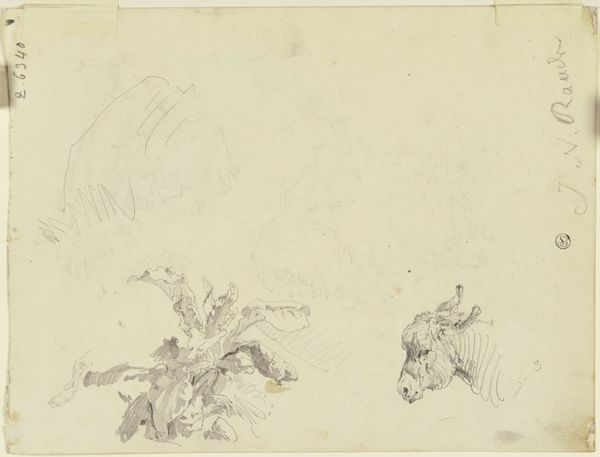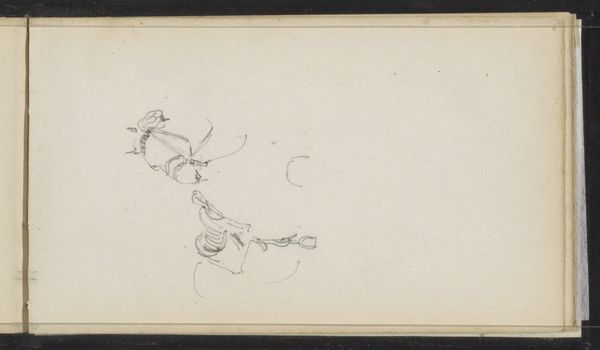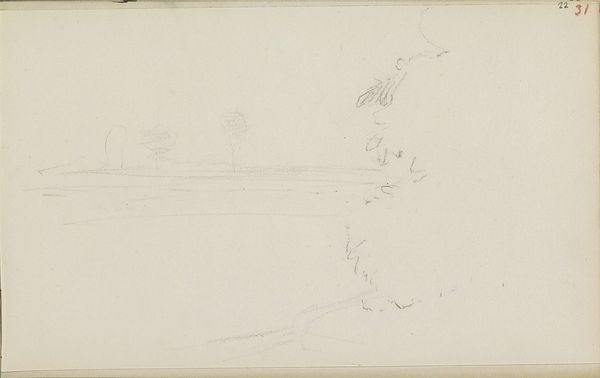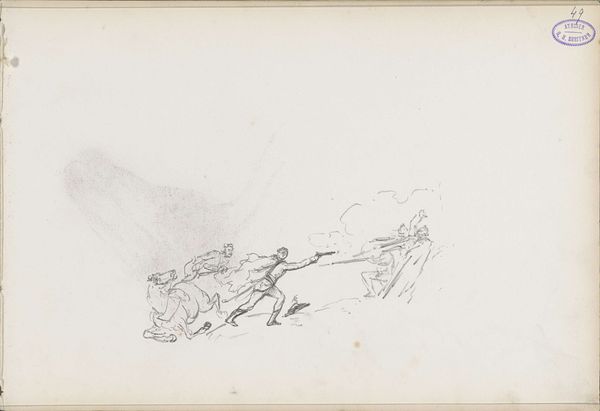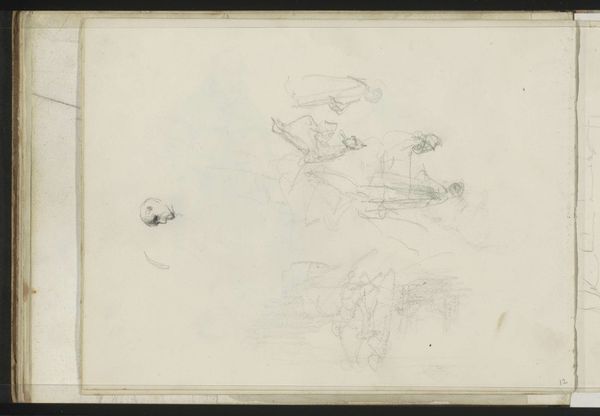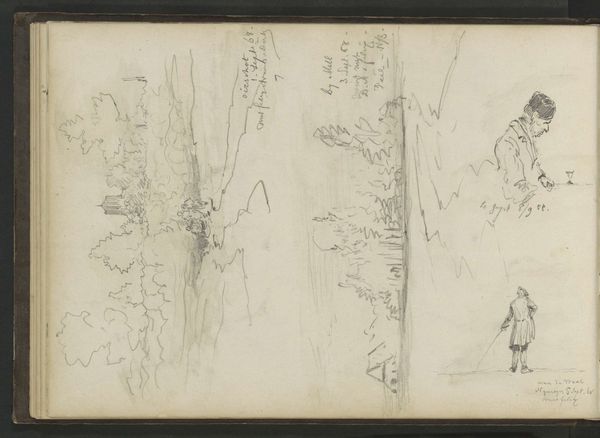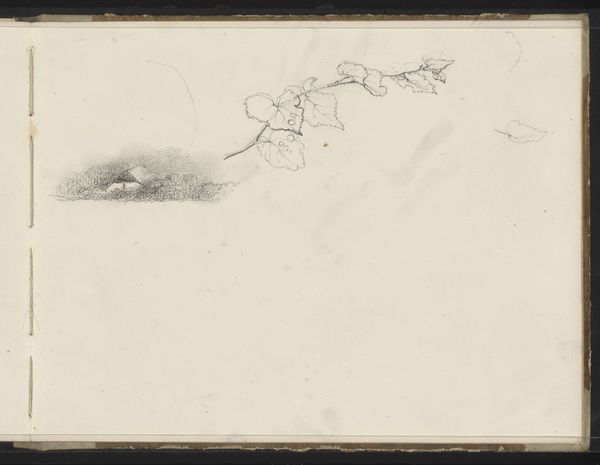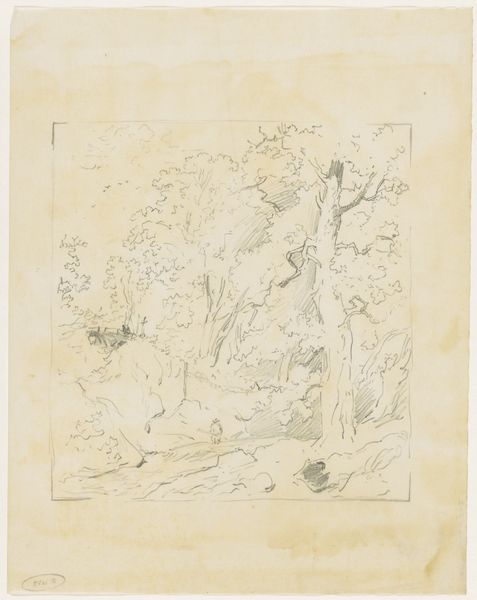
Sketches for a Cavalry Battle; the Hind Legs of a Dog 1813 - 1814
0:00
0:00
drawing, print, paper, pencil, graphite
#
pencil drawn
#
drawing
# print
#
figuration
#
paper
#
romanticism
#
pencil
#
graphite
#
history-painting
Dimensions: 172 × 230 mm
Copyright: Public Domain
Curator: Welcome to the Art Institute of Chicago. We're looking now at "Sketches for a Cavalry Battle; the Hind Legs of a Dog" by Théodore Géricault, created around 1813-1814. It’s a graphite drawing on paper. Editor: Chaos, energy, and something about mortality—that's what I get from this at first glance. It’s like peering into the whirlwind of a battle. Are those really just sketches? They feel so alive. Curator: They are sketches, yes. Géricault was deeply engaged with history painting, particularly representations of conflict and the human condition amidst it. He aimed to capture the emotional and physical intensity of war. Editor: Absolutely! It’s fragmented, but that almost makes it more powerful. You get a sense of fleeting moments, impressions, like a dream—or a nightmare—after the actual event. The hind legs of a dog feel strangely out of place though. Curator: The dog's presence is peculiar but it speaks to Géricault’s commitment to anatomical accuracy and naturalistic detail, which he may have been working on. Sketches like these were his way of exploring compositions and figures, developing a deeper understanding of anatomy and movement to fuel his larger paintings. Editor: It's interesting that he mixed the mundane detail of the dog with the sweeping drama of war. Did he perhaps seek to equalize or question heroism itself? Or maybe it just happened that way as his thoughts ran out on paper... I think it would be hard to plan to be *this* accidental! Curator: That's quite perceptive. Géricault came of age during and after the Napoleonic era. France experienced the rise and fall of revolutionary fervor, followed by disillusionment under imperial rule and then restoration. These images would often become deeply critical portrayals of conflict, questioning the accepted narratives of glory and heroism of war. Editor: That disillusionment definitely comes through. These fragmented bodies speak volumes about the human cost of such grand conflicts, far more effectively than any glorifying painting could. Almost like visual screams of reality, not pompous odes. Curator: Géricault used his art to grapple with this complicated cultural moment and express its discontents. In the end this is how these apparently disparate images get united together. Editor: Makes me want to revisit his larger works, now, with a new perspective! Thanks for pulling all the strings.
Comments
No comments
Be the first to comment and join the conversation on the ultimate creative platform.

